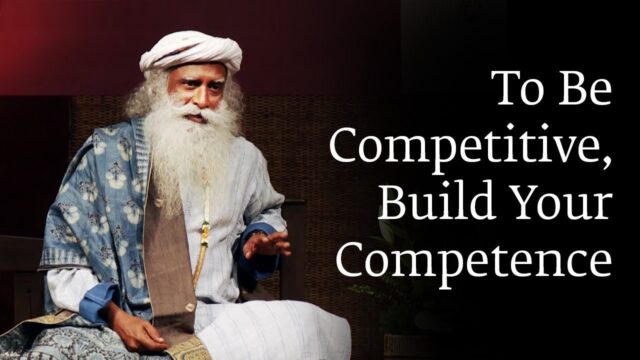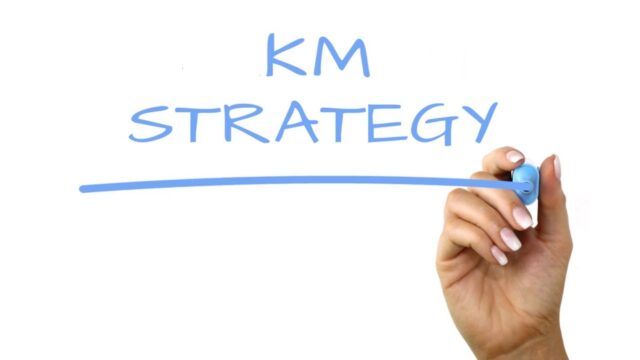
MBTI: can it really replace HR’s judgement?
In today’s fast-paced business environment, employers are always on the lookout for more efficient and scientific ways to assess a candidate’s potential. The Type 16 personality test (also known as the Myers–Briggs Type Indicator, MBTI)1 has become a popular tool in recent years and is widely used in recruitment and employee development. But the question remains: can the MBTI really replace HR in making judgments? In this article, I will explore the role and limitations of MBTI and its related knowledge management (KM) theories from various angles, seeking to provide a dialectical perspective.
MBTI: the magic and limitations of standardization
MBTI was initially a test scale compiled in the 1940s by Katharine Cook Briggs and her daughter Isabel Briggs Myers based on the foundation of Jung’s 8 personality theories. 16 personality types are formed through two-by-two combinations of the 8 letters of the alphabet – E, I, S, N, T, F, J, and P – in terms of tendencies in the four dimensions of source of energy, access to information, decision-making styles, and attitudes toward the outside world. The different types interpreted can, to a certain extent, help the company and the test subjects themselves to quickly understand their own strengths, personality traits, behavioral performance and so on2.

Imagine, as a HR manager, you have to face hundreds of resumes every day. Everyone has different backgrounds, personalities, and experiences, and you can’t possibly understand every applicant. At this point, the Type 16 personality test is like a magic tool that can quickly encode this complex personality information into 16 concise types. You’ll learn whether someone is an extrovert (E) or an introvert (I), a detail-oriented feeler (S) or an intuitive (N) who likes to see the big picture. A tool like this certainly provides you with a leap in efficiency. “Fast” “efficient” is the eternal pursuit of the enterprise, so the simple four letters of the MBTI can help HR quickly understand a person’s personality tendencies and determine their suitability for the position3.
However, this “magic” also has its limitations. Human personality is not like a color card that can be clearly divided into a fixed number of categories. You may be an “introvert” on a test, but when it comes to certain situations, you may suddenly appear to be a complete extrovert. This dynamic, complex human behavior is difficult to capture with a simple codification strategy like the Type 16 personality test. And people who take the test tend to fall prey to psychology’s “Barnum effect4,” believing in a general, generic description of personality, even if it’s quite empty – the answers they get on the test are skewed in favor of choosing “the way I want to be” rather than “who they are.” So the question is: would you want to rely on a standardized test to determine who the next key talent is for your company?

More importantly, a Type 16 personality test can only tell you about a person’s personality preferences, but it cannot reveal the person’s specific work abilities, problem-solving styles, or whether they will excel in a real work environment. During the recruitment process, companies are not only looking for a “match” with the requirements of the position, but also want to find people who can integrate into the team culture and have practical problem-solving skills. These are far more than personality tests can reveal.
Interviews: the communication and interaction of personalization
Compared to cold testing tools, the HR interview is a real exchange and interaction. It is a reflection of a personalized strategy, where HR not only asks questions to understand the candidate’s professional experience and abilities, but also senses the candidate’s mood, reaction speed and communication style through face-to-face communication. This interaction is often more vivid and three-dimensional than testing.

Imagine that a candidate shows a strong sense of responsibility and problem-solving ability in the interview, and even makes you feel that he fits the corporate culture through a small detail in the conversation with you. Such a perception cannot be given by a test. During the interview, HR can feel how the candidate handles pressure, how they respond to unexpected problems and how he interacts with others through visual observation. Such details help HR form a more comprehensive and realistic judgment, not just based on someone’s score on a test.
More interestingly, the interview is a “test” process where HR is not only evaluating the candidate, but the candidate is also determining if the company is a good fit for them through this interaction. This two-way communication stimulates real emotions and empathy, and builds initial trust. In contrast, the results of a simple test seem rigid and monotonous, and do not provide HR with such rich insights.
Codification vs. personalization strategies
Among the learning models of KM, codification strategy and personalization strategy are two common KM approaches used by enterprises.
In KM theory, codification strategy makes tacit knowledge explicit through standardized tools so that it can be quickly disseminated and applied. For example, companies use tools such as flowcharts, databases, or personality tests to simplify complex information into an actionable format, thereby improving efficiency. Type 16 personality tests are a typical example of this strategy.
The opposite is the personalization strategy5, which conveys knowledge through interpersonal interaction, experience transfer, and communication. Personalization focuses on gaining a deeper understanding through conversation, discussion and practice in specific situations, and HR in-person interviews are typical of this strategy.
Codification vs. personalization strategies (Lo & Ng, 2015)
| Codification | Personalization | |
| Media for the knowledge flow | Internet, intranet, document management systems, seminars, post-project reviews, search engines, e-learning, knowledge maps, decision support systems | Meetings, tele- and video-conference, one-to-one conversations, community of practice, story-telling, groupware, yellow pages, mentoring |
| Advantages |
|
|
| Disadvantages |
|
|
So, should you choose a codification strategy like the Type 16 personality test or a personalization strategy that relies on the interview?
The truth is that codification and personalization strategies do not need to be opposites; they can complement each other6. In mass recruiting, MBTI can act as a “screener” to help HR quickly identify candidates, and then, through personalized interviews, HR can gain a deeper understanding of whether the candidate has the actual ability to match the position, and whether they can create chemistry with the team. The combination of the two makes the recruitment process both efficient and humane. In addition, in terms of KM, companies can establish a coded knowledge base to improve efficiency, while ensuring employees’ in-depth understanding and flexible application of knowledge through personalized training and seminars7.
Conclusion
Recruitment is a combination of science and art, and the battle between MBTI and interviews reflects the interplay of codification and personalization strategies in knowledge management. By integrating codification and personalization strategies, companies can enjoy efficient initial screening and make more informed judgements through in-depth interactions, a combination that can make the hiring process smarter and more humane.
In addition, our instructor Rajesh Dhillon has emphasised that a personalization strategy should focus on assessing the candidate’s fit with the organization’s culture, providing more comprehensive and detailed information about the individual. In this way, organizations can conduct more in-depth assessments to ensure that candidates are culturally and value-aligned with the business, thus optimizing the overall talent selection and recruitment decision-making process.
Article source: Adapted from MBTI, can it really replace HR’s judgment? prepared as part of the requirements for completion of course KM6304 Knowledge Management Strategies and Policies in the Nanyang Technological University Singapore Master of Science in Knowledge Management (KM).
Header image source: d4rkwzd on Pixabay.
References:
- NERIS Analytics Limited. (n.d.). 16 Personalities. ↩
- Yang, Y. (2022, April). Research on the Application of MBTI in Organization. In 2022 7th International Conference on Social Sciences and Economic Development (ICSSED 2022) (pp. 1751-1754). Atlantis Press. ↩
- Bharadwaj, S., Sridhar, S., Choudhary, R., & Srinath, R. (2018, September). Persona traits identification based on Myers-Briggs Type Indicator (MBTI) – a text classification approach. In 2018 international conference on advances in computing, communications and informatics (ICACCI) (pp. 1076-1082). IEEE. ↩
- Wikipedia, CC BY-SA 4.0. ↩
- Lo, M. F., & Ng, P. M. L. (2015, November). Role of codification and personalization in organizational learning, innovation and performance: A conceptual framework and research propositions. In International Conference on Intellectual Capital and Knowledge Management and Organisational Learning (p. 142). Academic Conferences International Limited. ↩
- Bolisani, E., Padova, A., & Scarso, E. (2020). The continuous recombination of codification and personalisation KM strategies: a retrospective study. Electronic Journal of Knowledge Management, 18(2), 185-195. ↩
- Huang, X., Yang, F., Zheng, J., Feng, C., & Zhang, L. (2023). Personalized human resource management via HR analytics and artificial intelligence: Theory and implications. Asia Pacific Management Review, 28(4), 598-610. ↩







